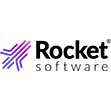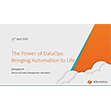
Why Embedded Analytics Are the Foundation of a Successful Application

(ZinetroN/Shutterstock)
Is your application starting to become irrelevant?
Or, put another way, is your application focusing only on facilitating the transactional parts of the customer interaction process while missing an opportunity to also provide critical insights? Because if your application is, it’s losing value. Sure, transactional tasks are getting automated, say sales or inventory management. A transactional report is getting generated. But is the business task itself getting done better or faster?
Embedding a layer of analytics into your existing application, on the other hand, is a pathway to delivering better results rather than just statistics because in-app analytics is a conduit to better decision-making.
Data analysis is no longer the sole domain of a few highly trained technical people. Today, amid the rise of data discovery, making the most of analytics falls on business leaders and other users as much as IT teams. Everyone is expected to be aware of their business domain data to make the right business decisions.
Application teams are now expected to simplify the difficult tasks of data preparation and visualization. Gleaning insight from near-real-time data, visualizations, interactive reports and other capabilities allow application teams to stay ahead of the curve on what’s needed next.
Embedded analytics are the foundation of successful application optimization. Here’s a closer look at how they can save time, increase productivity, lead to innovation and serve customers better.
Centralizing and Automating Analytics to Save Valuable Time
With an analytics layer embedded in your application workflow, you can centralize and automate analytics and reporting processes in near-real time.
Say your organization has dozens of locations, each generating dozens of business metrics, whether data on sales, staffing, inventory or numerous other factors. The data is invaluable. Finding actionable insights, however, might be insufferable without an in-app analytics solution that aggregates and reports the data in a consistent way across locations.
Otherwise, how much time would employees spend gathering the data? How much time would managers or IT teams spend generating reports? Siloed reporting models incur significant development time and restrict the sharing of data that users need.
Automated data gathering and reporting through embedded analytics can yield insights in near-real-time. Managers, team members and members of other teams can review benchmark categories right from a mobile device.
The net result is increased productivity, real-time feedback and efficiency. Embedded Analytics enables business users to spend less time switching back and forth between business applications and analytics tools, and more time on value-added activities.
A More Detailed and Helpful Visual Understanding
Embedded analytics provide application team leaders far more insight than what, say, traditional business intelligence affords. Traditional BI leans on static, often dated reports. Embedded analytics provide more near real-time data analysis and reporting capabilities.
Tools include dashboards and data visualizations of performance metrics, interactive reports with scheduling capabilities, self-service analytics and ad hoc querying to explore user-unique inquiries, benchmarking to compare metrics against peers or other external data, and mobile reporting.
Users get frustrated when basic data analysis capabilities prevent them from aggregating their own data or creating visualizations. Embedded analytics helps application development teams to innovate faster and increase customer satisfaction. The data and insights can yield new features or new use structures and reduce development time. Superior analytics and reporting experience increase customer engagement and draw new customers.
Gaining a Competitive Edge
Application teams have access to near-real-time data to guide decision-making when expectations for turnaround times only grow tighter. With self-service abilities, they can build dashboards and reports that could be tailored by individual business users to their needs. This improves the productivity of the business users so they can spend more time on your core business aspects that set you apart from your competitors. This in turn frees up application teams to focus on new products that help grow the business and create differentiation in the marketplace.
Whether through the additional insights or time gained, embedded analytics reveal new processes and opportunities. They drive innovation.
To remain relevant, an application must do more than yield a set of results or perform a set of tasks. Such a narrow view of its function ignores myriad other opportunities that embedded analytics can reveal. An application’s goal shouldn’t just be transactional (tracking sales activity or managing inventory). The goal should be about selling better and giving a better customer experience of your products. Actionable insights layered inside of existing applications give the business user makes them productive and make better business decisions.
The choice is up to your organization. It can keep plugging along like the more than half of the respondents to an executive survey who said they were not yet treating data as a business asset. Or your organization can embrace data and give your application teams the right embedded analytics tool to take insights and decision-making to the next level, where your organization reaches a wider customer base, expands profitability and remains competitive and relevant in the marketplace.
About the Author: Vijay Pendyala is the SVP of Engineering at Logi Analytics. He has been working in the high-tech industry with a focus on enterprise software, big data analytics, artificial intelligence (AI). For over 20+ years Vijay has held senior and executive-level roles in engineering, product management, data science, and SaaS operations. As a senior leadership team (SLT) member, Vijay has direct responsibility for leading Architecture, Engineering, Data Science, DevOps, and SaaS Operations. My primary responsibilities include building high-performance teams through the software development lifecycle, growing revenue, improving operating margins, and building market-leading products.
Related Items:
Insightsoftware Loads Up on Embedded Analytics with Logi, Izenda Deals
Embedded Analytics Goes Mainstream
September 16, 2025
- MongoDB Launches AI-Powered Application Modernization Platform to Reduce Technical Debt and Speed Innovation
- UC San Diego Plays Key Role in National Effort to Build a Fusion Research Data Platform
- NVIDIA Welcomes Data Guardians Network to Its Elite Startup Program
- Acceldata Survey Finds Persistent Gaps in Enterprise AI Data Readiness
- Exabeam and DataBahn Partner to Accelerate AI-Powered Security Operations with Smarter Threat Detection
- Domino Data Lab Achieves ISO 9001 and SOC 2 Type II With Zero Findings
- Qlik Open Lakehouse Now Generally Available, Giving Enterprises Rapid, AI-Ready Data on Apache Iceberg
- Expert.ai and Springer Nature Partner to Transform Clinical Trials with AI-Driven Intelligence and Deep Domain Expertise
- Denodo Expands AI Capabilities with Release of DeepQuery in Platform 9.3
- Indicium Receives Investment from Databricks Ventures
- DataOps.live Launches Major Upgrade to Deliver AI-Ready Data at Enterprise Scale
- Ethernet Alliance to Showcase Multivendor Live Demonstration at ECOC 2025
- Allot Leverages SnapLogic to Launch AI Agent to Highlight Health Inequalities in Pharma
September 15, 2025
- Penn State Center for Social Data Analytics Now Accepting Grant Applications
- Pacific Wave, Cal Poly Humboldt, and Internet2 Collaborate on Connectivity to Singapore, Guam, and Jakarta
- Governing AI Starts with Giving Users Control Over Their Data
- KX and OneTick Merge to Unite Capital Markets Data, Analytics, AI and Surveillance on One Platform
- Snowflake Ranked by Fortune as #1 on Its Future 50 2025 List
- Exabeam and Cribl Partner to Power Scalable, High-Fidelity Threat Detection with Next-Gen Data Pipelines
September 11, 2025
- Inside Sibyl, Google’s Massively Parallel Machine Learning Platform
- What Are Reasoning Models and Why You Should Care
- Rethinking Risk: The Role of Selective Retrieval in Data Lake Strategies
- The AI Beatings Will Continue Until Data Improves
- Beyond Words: Battle for Semantic Layer Supremacy Heats Up
- Software-Defined Storage: Your Hidden Superpower for AI, Data Modernization Success
- How to Make Data Work for What’s Next
- Why Metadata Is the New Interface Between IT and AI
- Top-Down or Bottom-Up Data Model Design: Which is Best?
- What Is MosaicML, and Why Is Databricks Buying It For $1.3B?
- More Features…
- Mathematica Helps Crack Zodiac Killer’s Code
- GigaOm Rates the Object Stores
- Promethium Wants to Make Self Service Data Work at AI Scale
- Solidigm Celebrates World’s Largest SSD with ‘122 Day’
- Databricks Now Worth $100B. Will It Reach $1T?
- AI Hype Cycle: Gartner Charts the Rise of Agents, ModelOps, Synthetic Data, and AI Engineering
- MIT Report Flags 95% GenAI Failure Rate, But Critics Say It Oversimplifies
- The Top Five Data Labeling Firms According to Everest Group
- Data Prep Still Dominates Data Scientists’ Time, Survey Finds
- Career Notes for August 2025
- More News In Brief…
- Seagate Unveils IronWolf Pro 24TB Hard Drive for SMBs and Enterprises
- Gartner Predicts 40% of Generative AI Solutions Will Be Multimodal By 2027
- DataSnap Expands with AI-Enabled Embedded Analytics to Accelerate Growth for Modern Businesses
- Acceldata Announces General Availability of Agentic Data Management
- Transcend Expands ‘Do Not Train’ and Deep Deletion to Power Responsible AI at Scale for B2B AI Companies
- Pecan AI Brings Explainable AI Forecasting Directly to Business Teams
- SETI Institute Awards Davie Postdoctoral Fellowship for AI/ML-Driven Exoplanet Discovery
- NVIDIA: Industry Leaders Transform Enterprise Data Centers for the AI Era with RTX PRO Servers
- Hitachi Vantara Recognized by GigaOm, Adds S3 Table Functionality to Virtual Storage Platform One Object
- Ataccama Data Trust Assessment Reveals Data Quality Gaps Blocking AI and Compliance
- More This Just In…







































